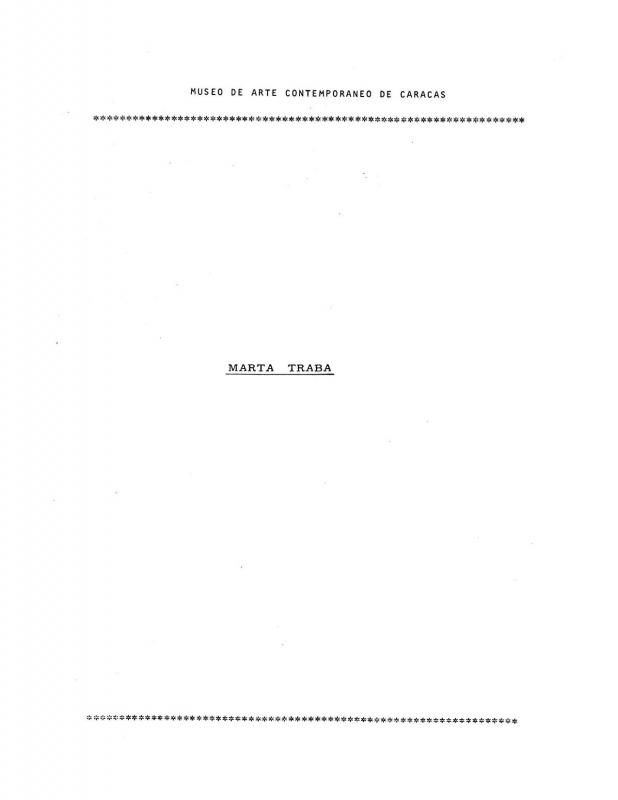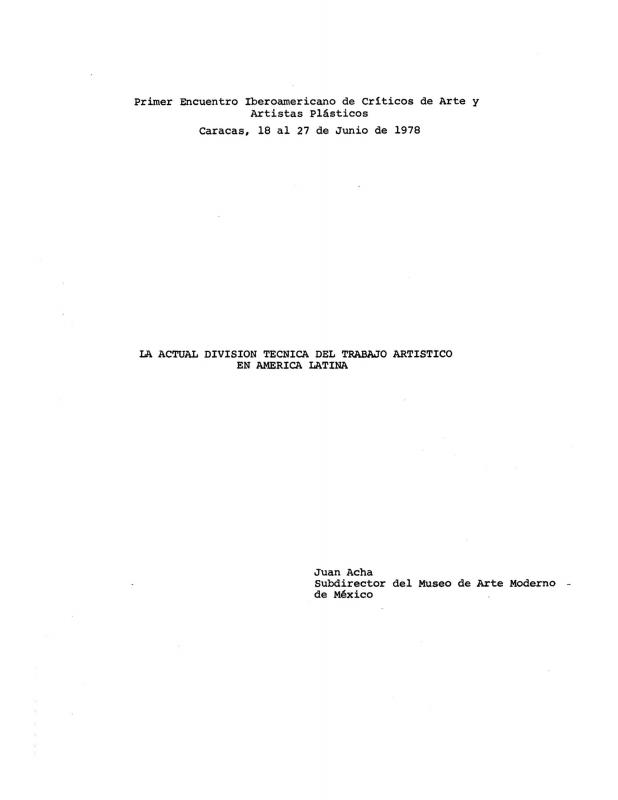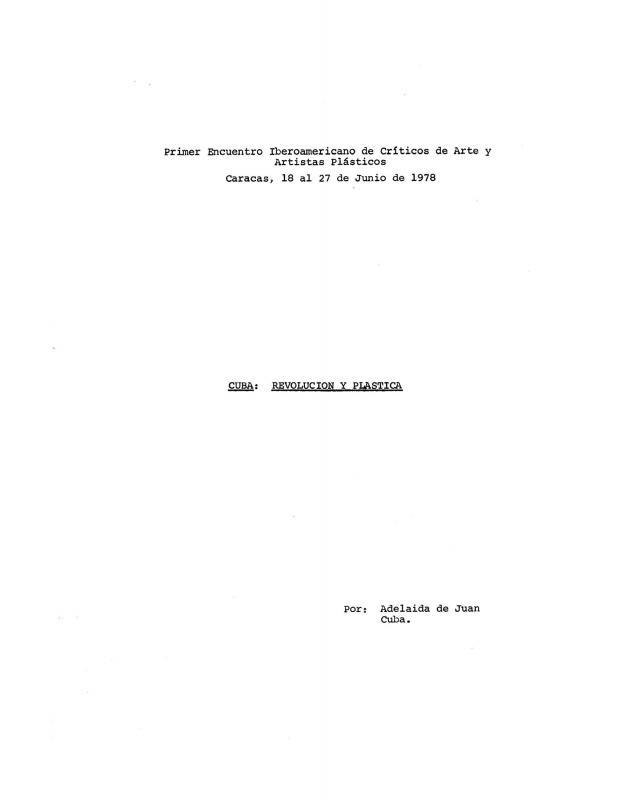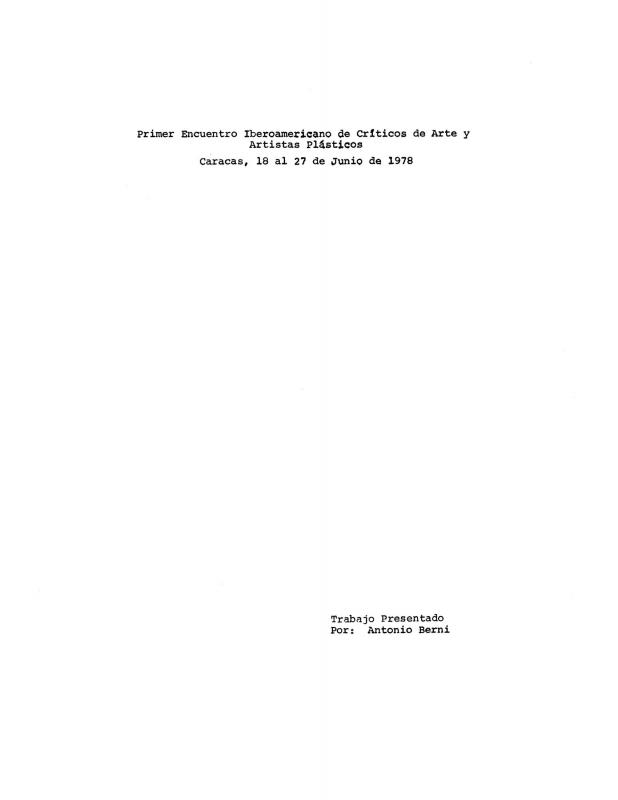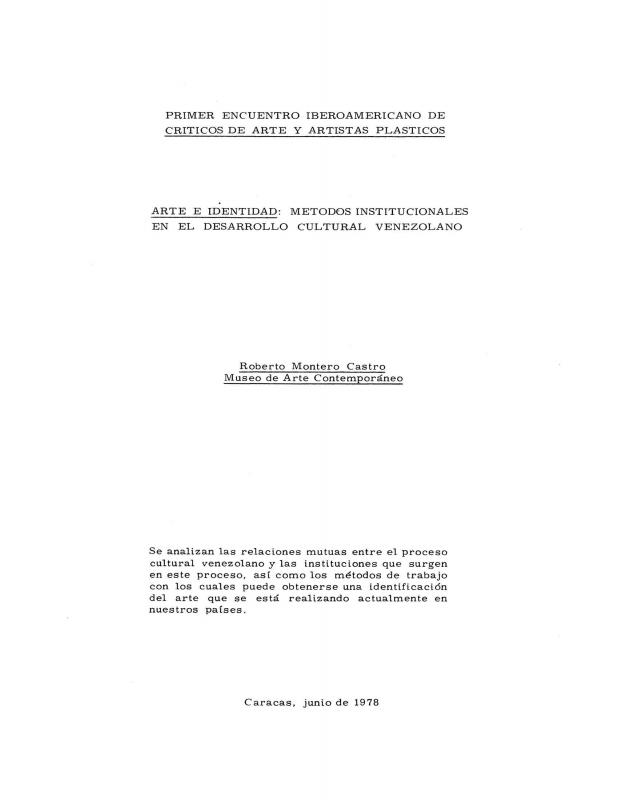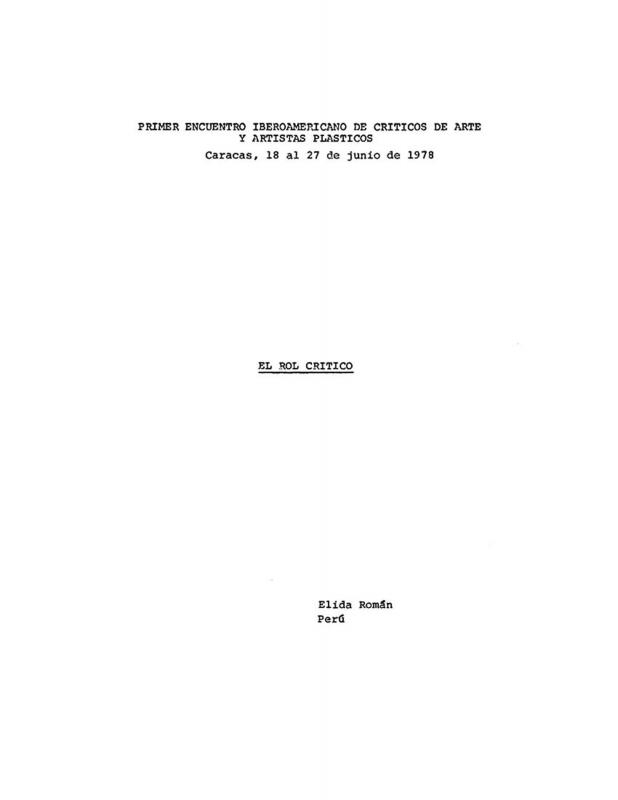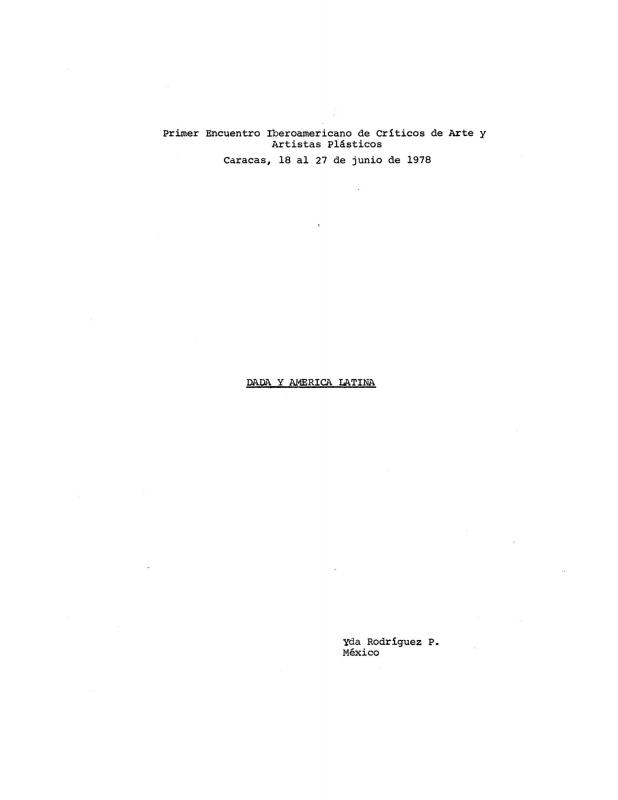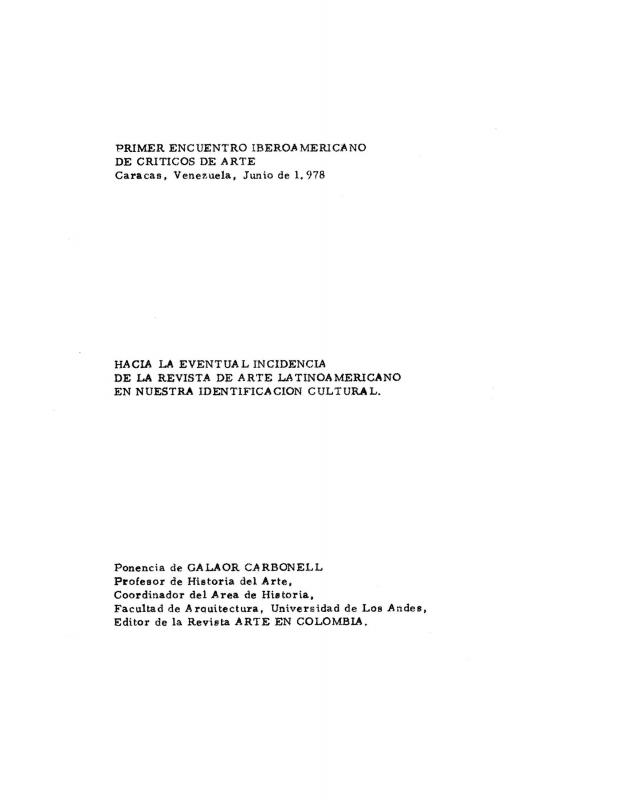The Argentinean visual artist Julio Le Parc (b. 1928)—who has lived in France (in Cachan, just outside Paris) since 1960, and is the founder of GRAV (Groupe de Recherche d’Art Visuel [Visual Arts Research Group])—phrases his questions in such a way that they suggest the answer being sought, or have only one answer. In the second section he itemizes the main categories that have historically defined the subject of Hispanic American art. In his introduction to the questionnaire, the artist warns that the questions will not address aesthetic problems, something that might be expected from a contemporary artist who is actively engaged in the production of art. Instead, he refers to existing relationships between art and social issues. Le Parc thus continued to explore the nexus between art and society throughout his career.
The Primer Encuentro Iberoamericano de Críticos de Arte y Artistas Plásticos was held in 1978 at the Museo de Bellas Artes in Caracas. In addition to Julio Le Parc, other important figures in the fields of art criticism and art itself were at the event, including Jorge Alberto Manrique, Marta Traba (see “La tradición de lo nacional” [doc. no. 815744]), Juan Acha (“La actual división técnica del trabajo artístico en América Latina” [doc. no. 815489]), Carlos Areán (“Iberoamérica y su identidad artística y cultural” [doc. no. 815730]), Adelaida de Juan (“Cuba: revolución y plástica” [doc. no. 815544]), Carlos Rodríguez Saavedra, Jacqueline Barnitz, Berta Taracena (“Elementos constantes en el arte iberoamericano” [doc. no. 815558]), Antonio Berni (“No puedo dejar de destacar la importancia de este encuentro” [doc. no. 815659]), Roberto Montero Castro (“Arte e identidad: métodos institucionales en el desarrollo cultural venezolano” [doc. no. 815631]), Marco Miliani, Alirio Rodríguez, Jorge Glusberg (“Aproximación metodológica para una comprensión de la retórica del arte latinoamericano” [doc. no. 815475]), Élida Román (“El rol del crítico” [doc. no. 815617]), Ida Rodríguez Prampolini (“Dadá y América Latina” [doc. no. 815758]), Galaor Carbonell (“Hacia la eventual incidencia de la revista de arte latinoamericano en nuestra identificación” [doc. no. 815603]), Roberto Pontual, and Aracy A. Amaral.
The “Austin Symposium” was an important forerunner to this event. The Symposium was organized by Damián C. Bayón and held at the University of Texas at Austin in late October 1975. Many of the participants at the 1978 Encuentro had attended the Austin Symposium, which led to much discussion on the shared experience. Bayón later published a book about the Austin Symposium: El artista latinoamericano y su identidad (Caracas: Monte Ávila Editores, Colección Estudios, 1977; 150 pp. illustrated in black and white).
It is important to note that the lectures delivered at the Museo de Bellas Artes in 1978 had not been published at that point, though some were subsequently included in monographs or anthologies. They therefore possess great documentary value as primary source material.

